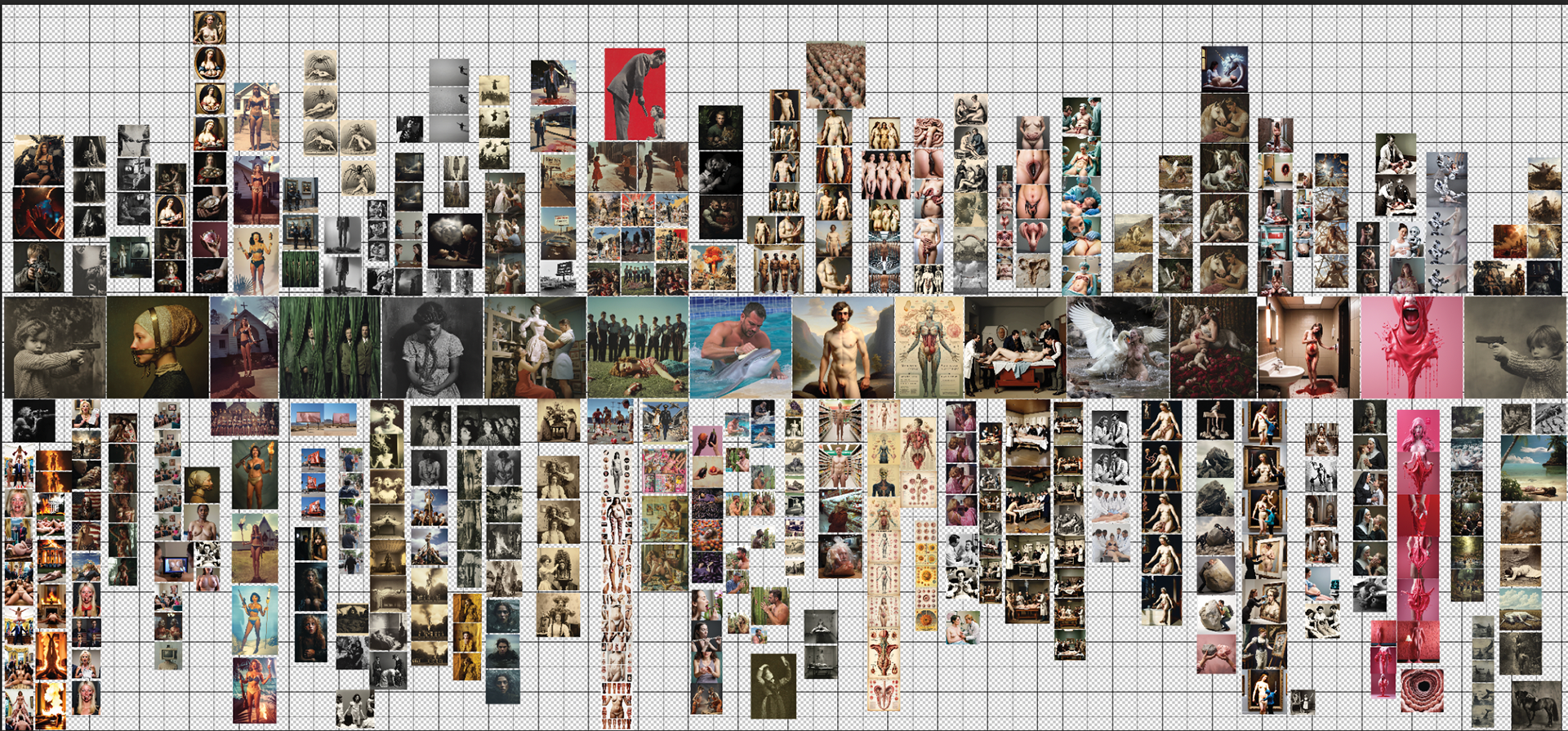Six large prints will be displayed at the University of Bergen as part of the Exhibition "An Eye for Cinema", October 2025
Considering the origins and construction of moving images, Hebron prompted Midjourney to return to Muybridge's canonical grids of animals in motion. She was interested to see if the AI model could discern - and predict - novel movement sequences and present them in a grid in return. Taking just one of the resulting images from the prompt 'Study of animals in motion int he style of Eadweard Muybridge', Hebron then asked midjourney to repeatedly generate nearly 1000 variations of that same image, without any changes to the original prompt. The result was a devolution of forms from a grid to a single animal, and from a horse, to a chimerical rooster. The images here are just a few key examples from the beginning, middle, and end of the numerous iterations.
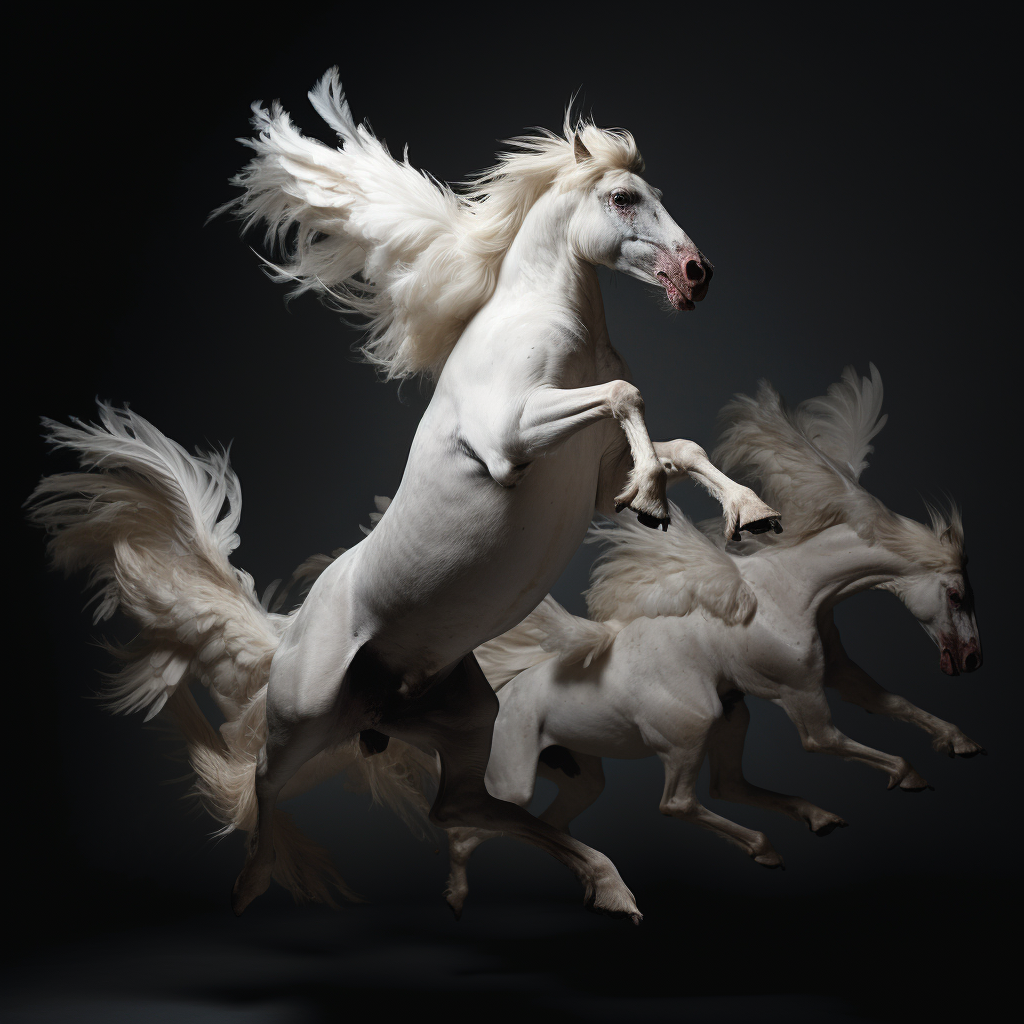
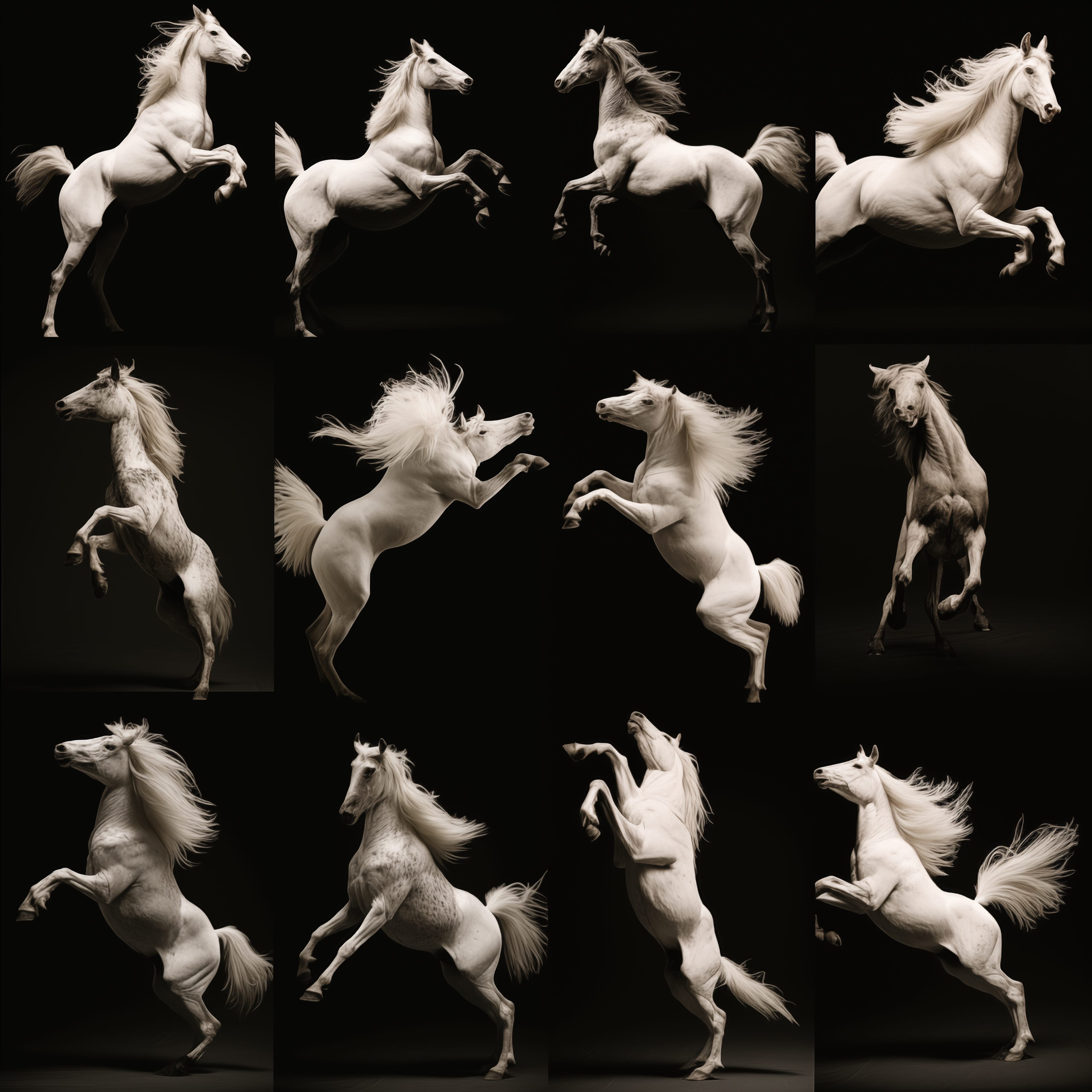
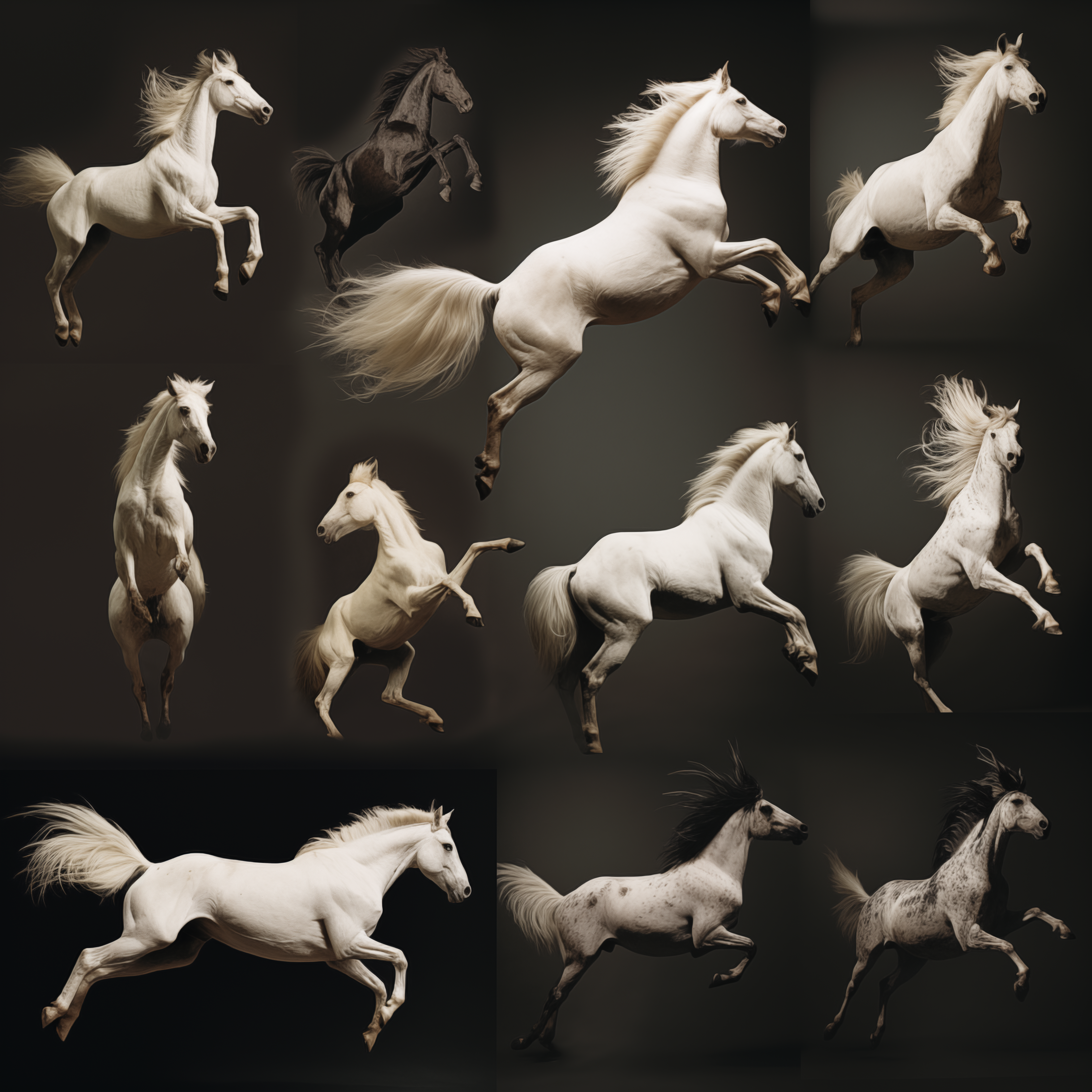
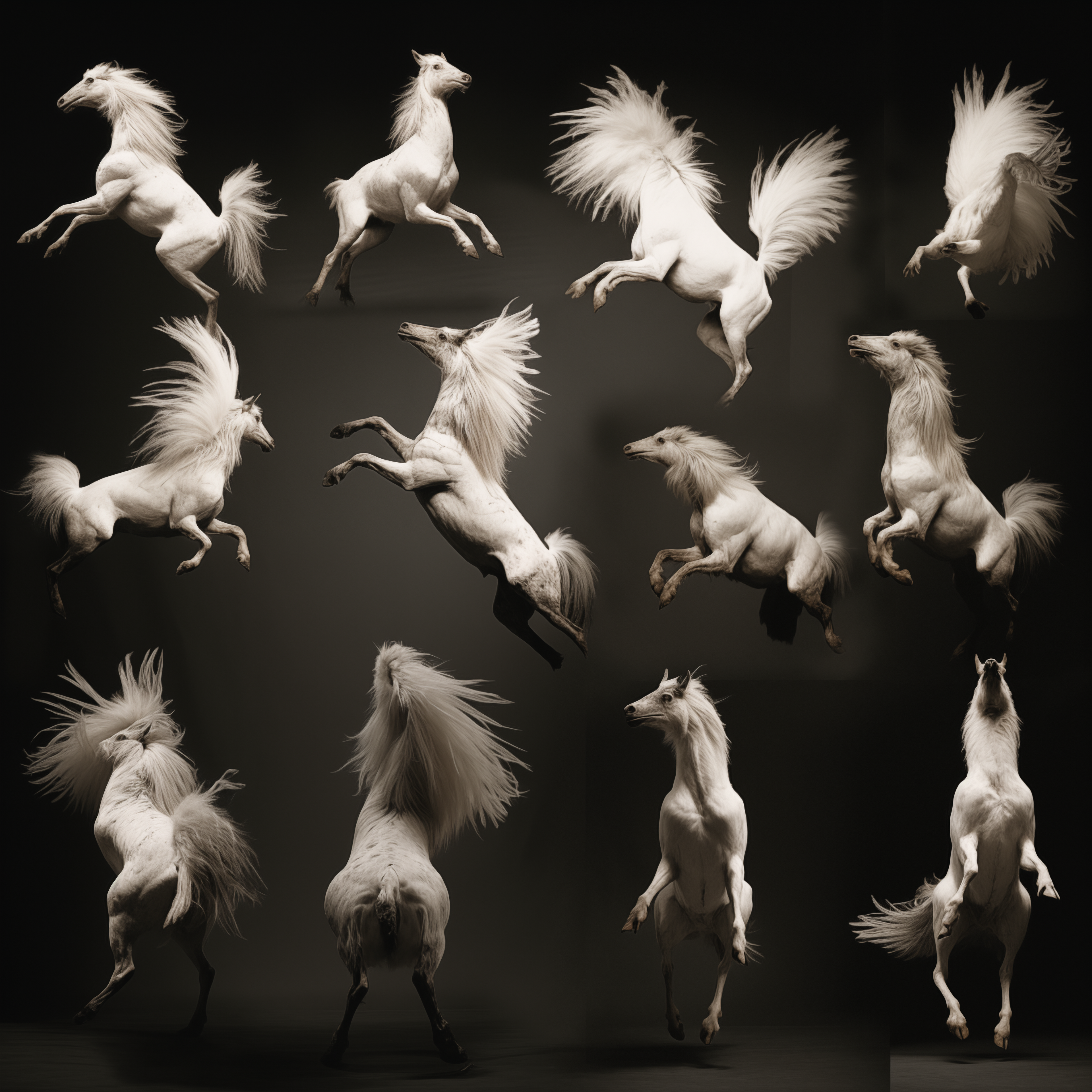
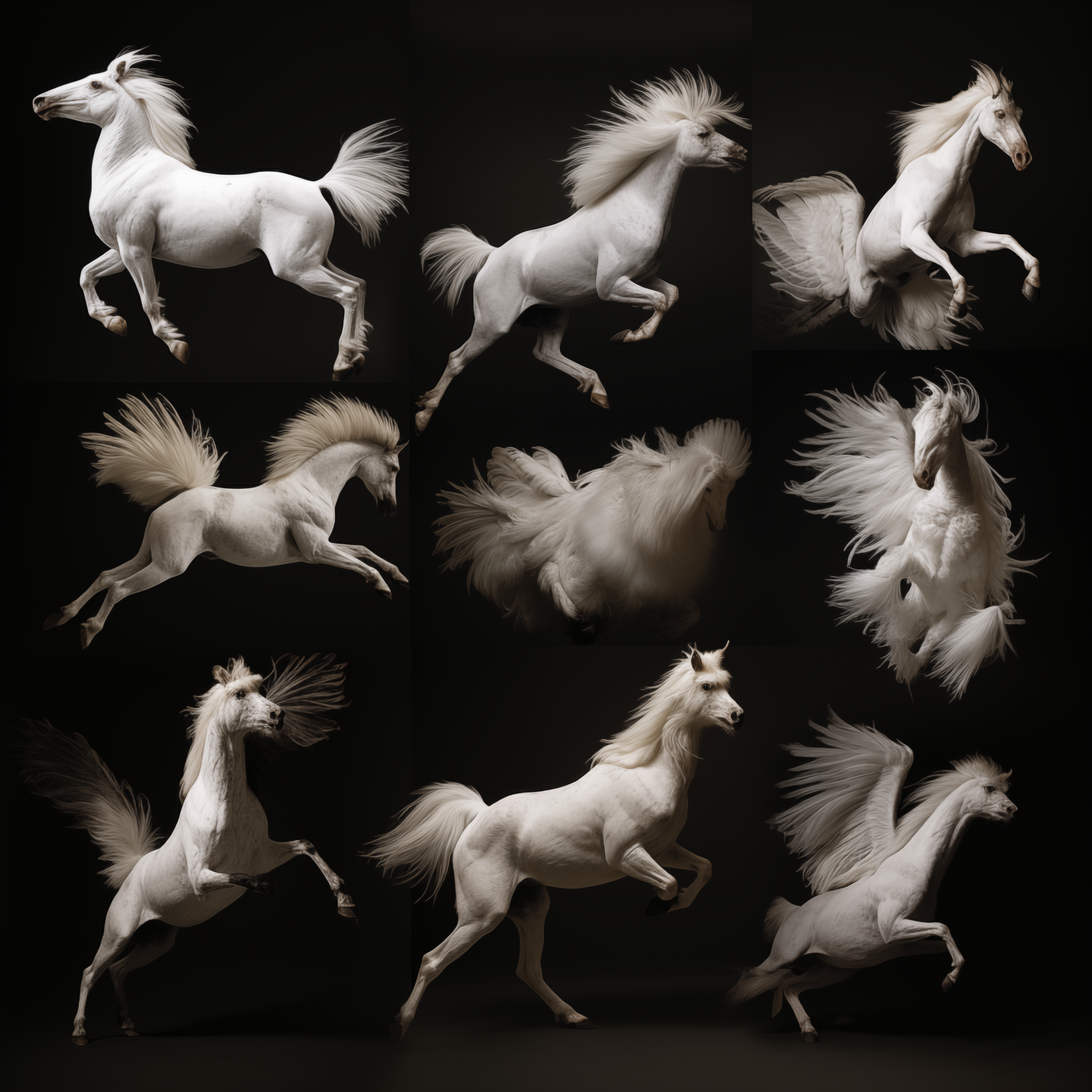
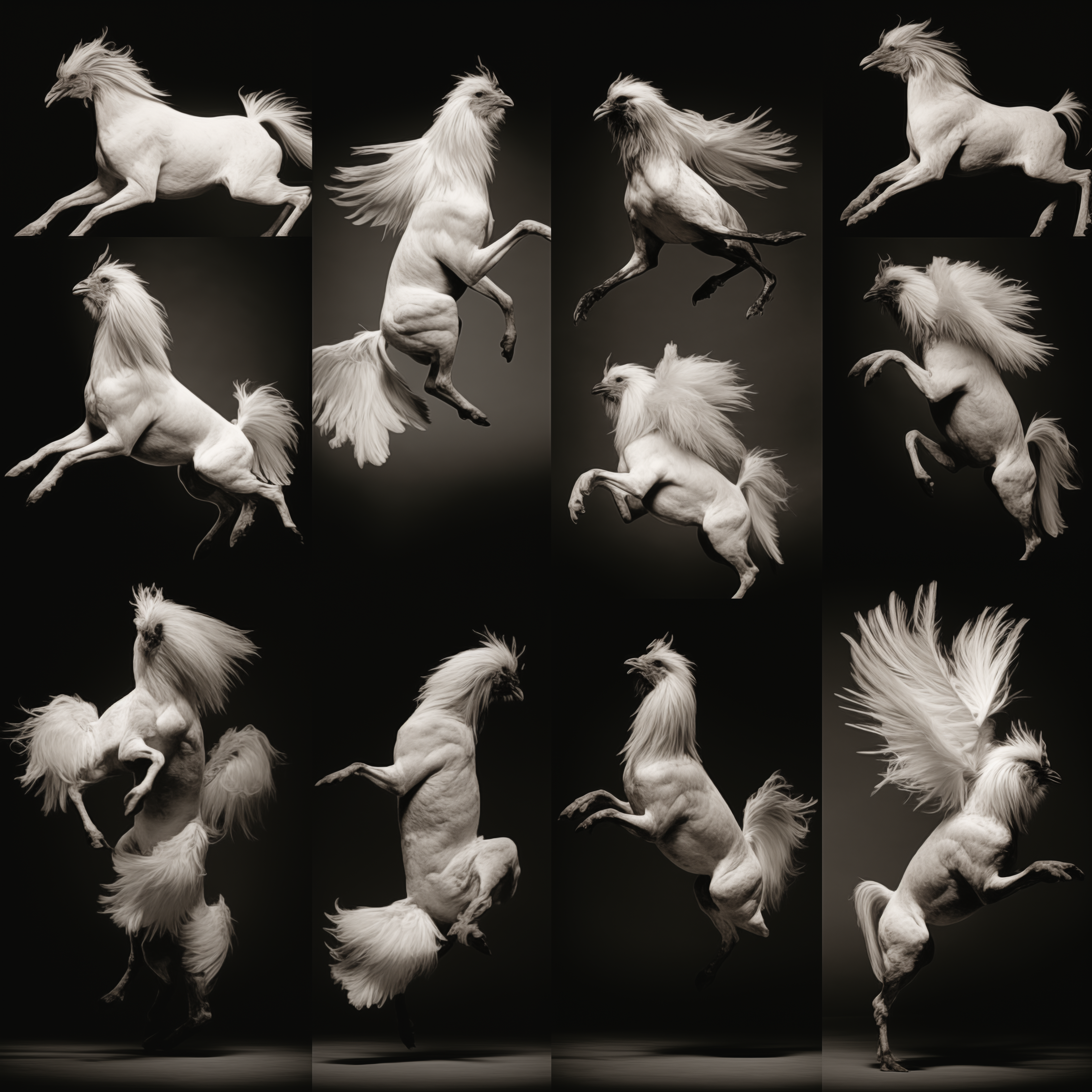
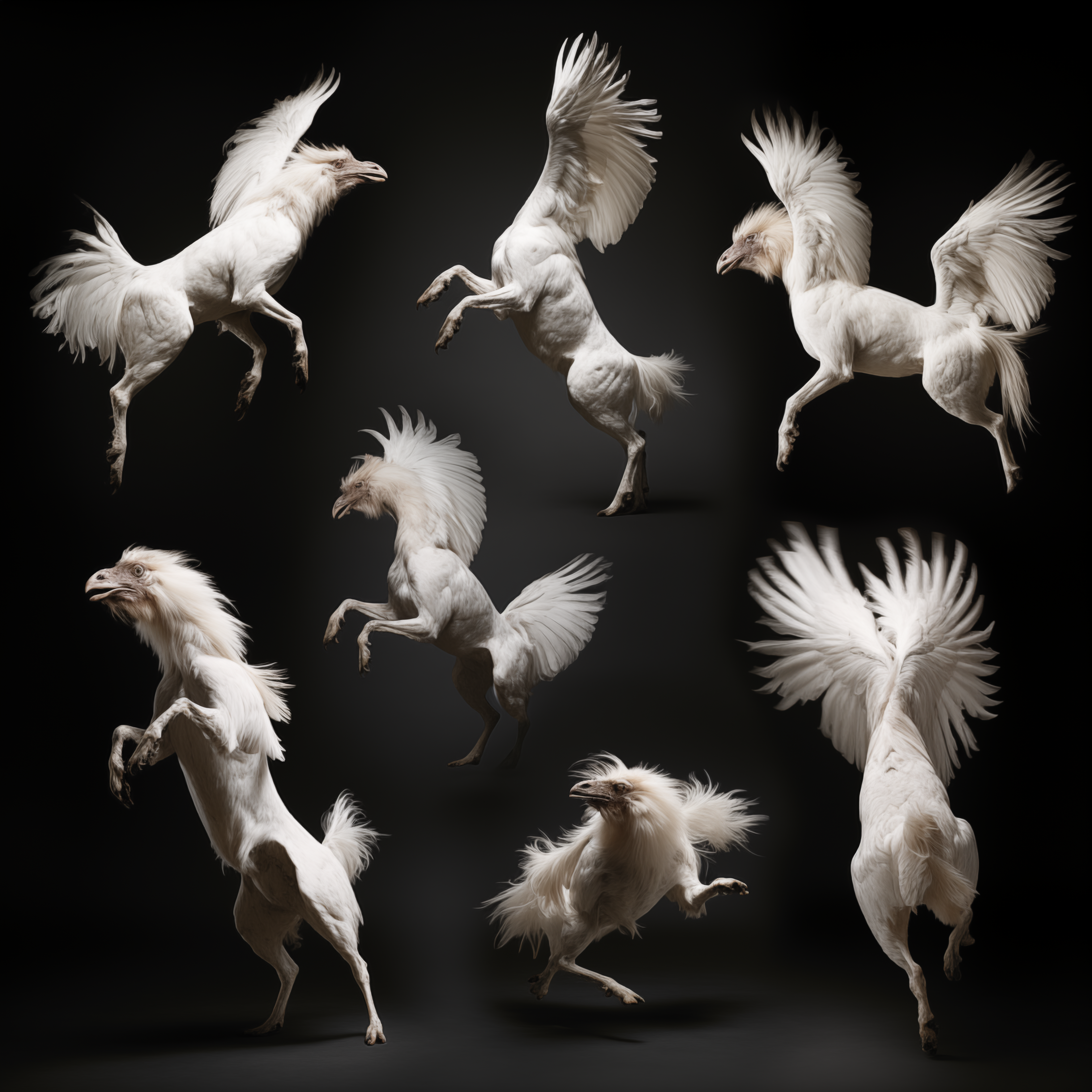
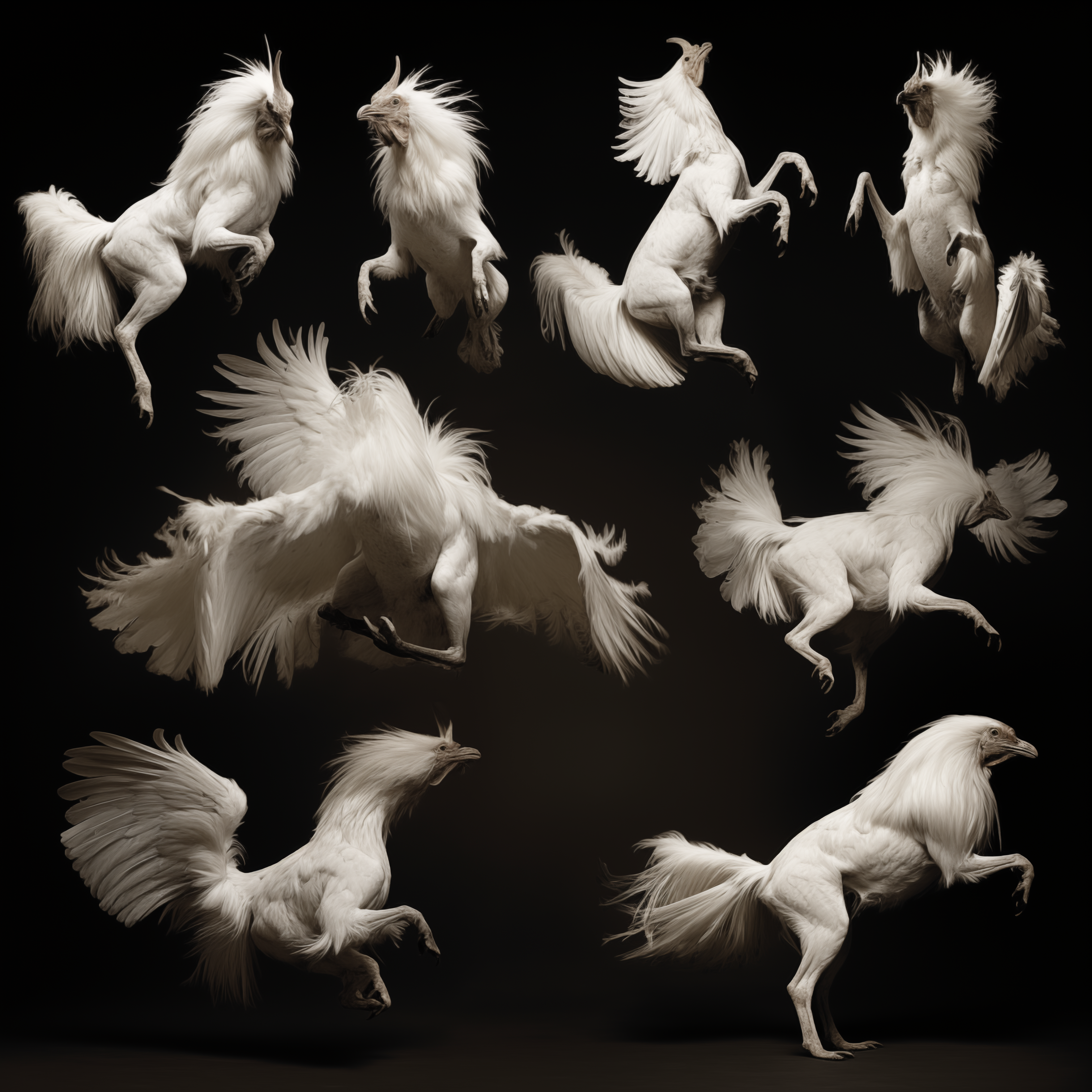
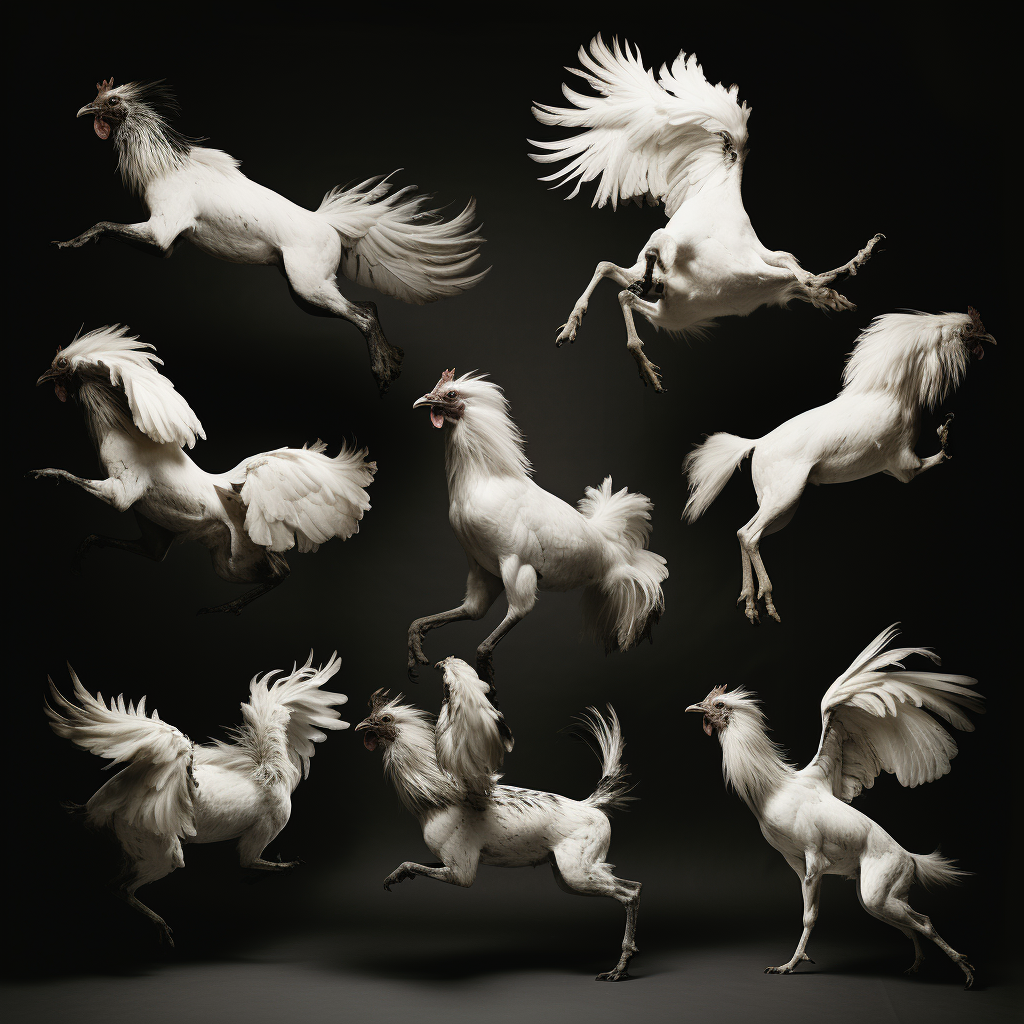
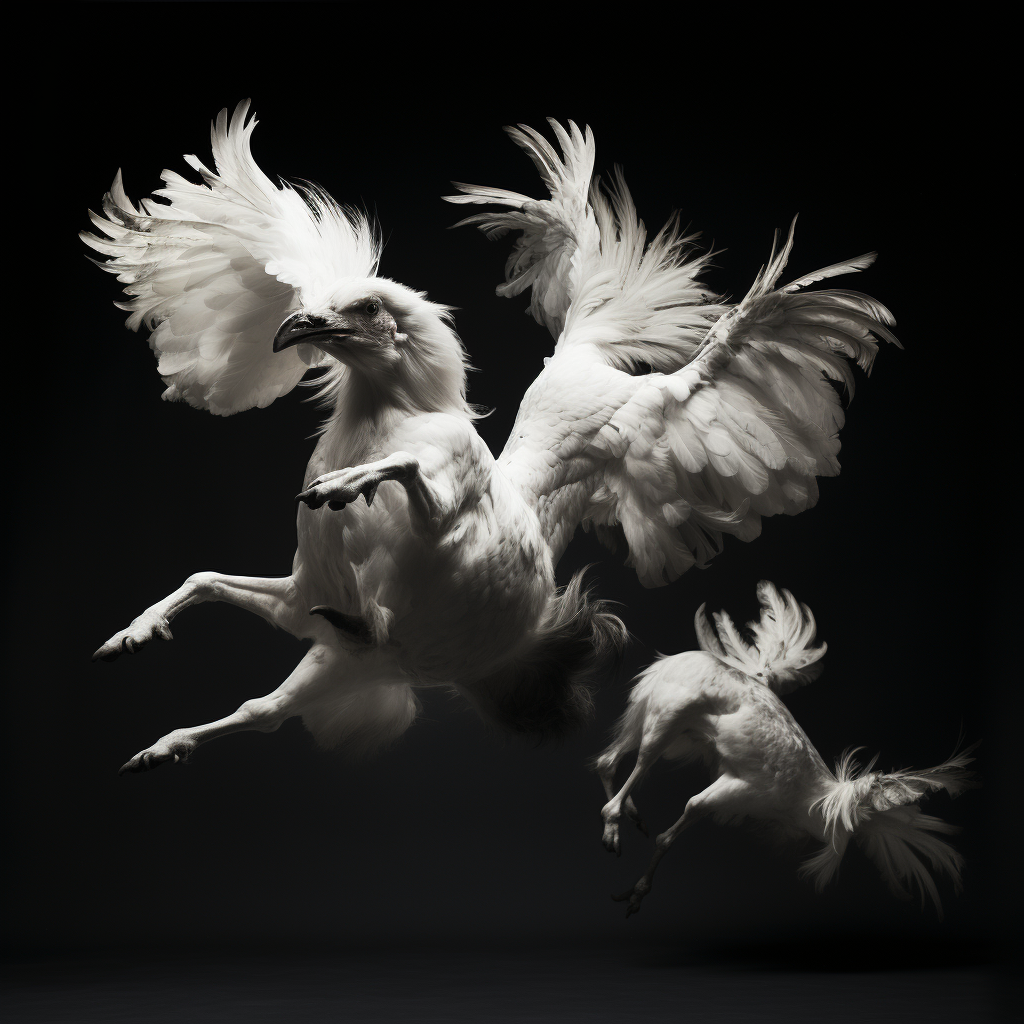
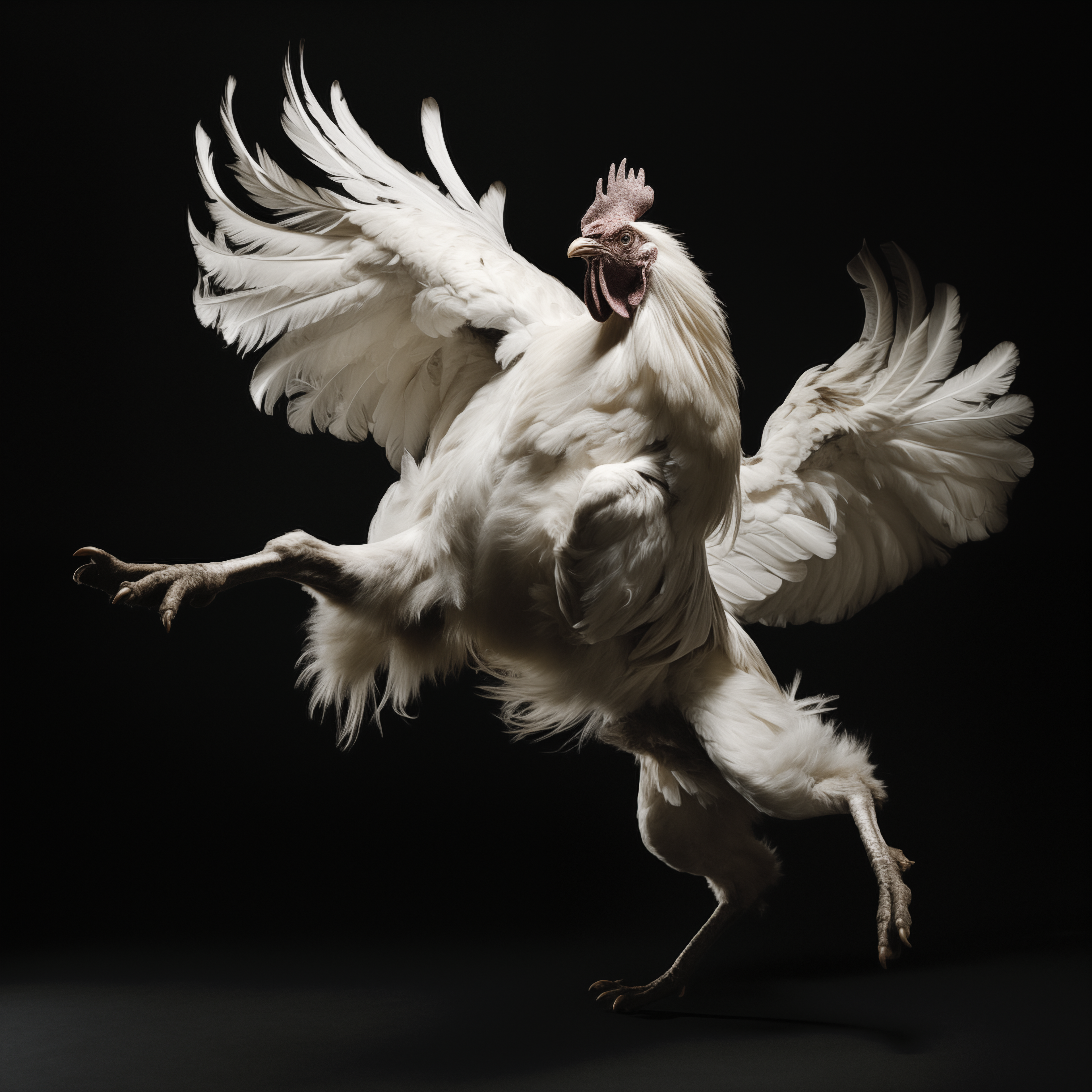
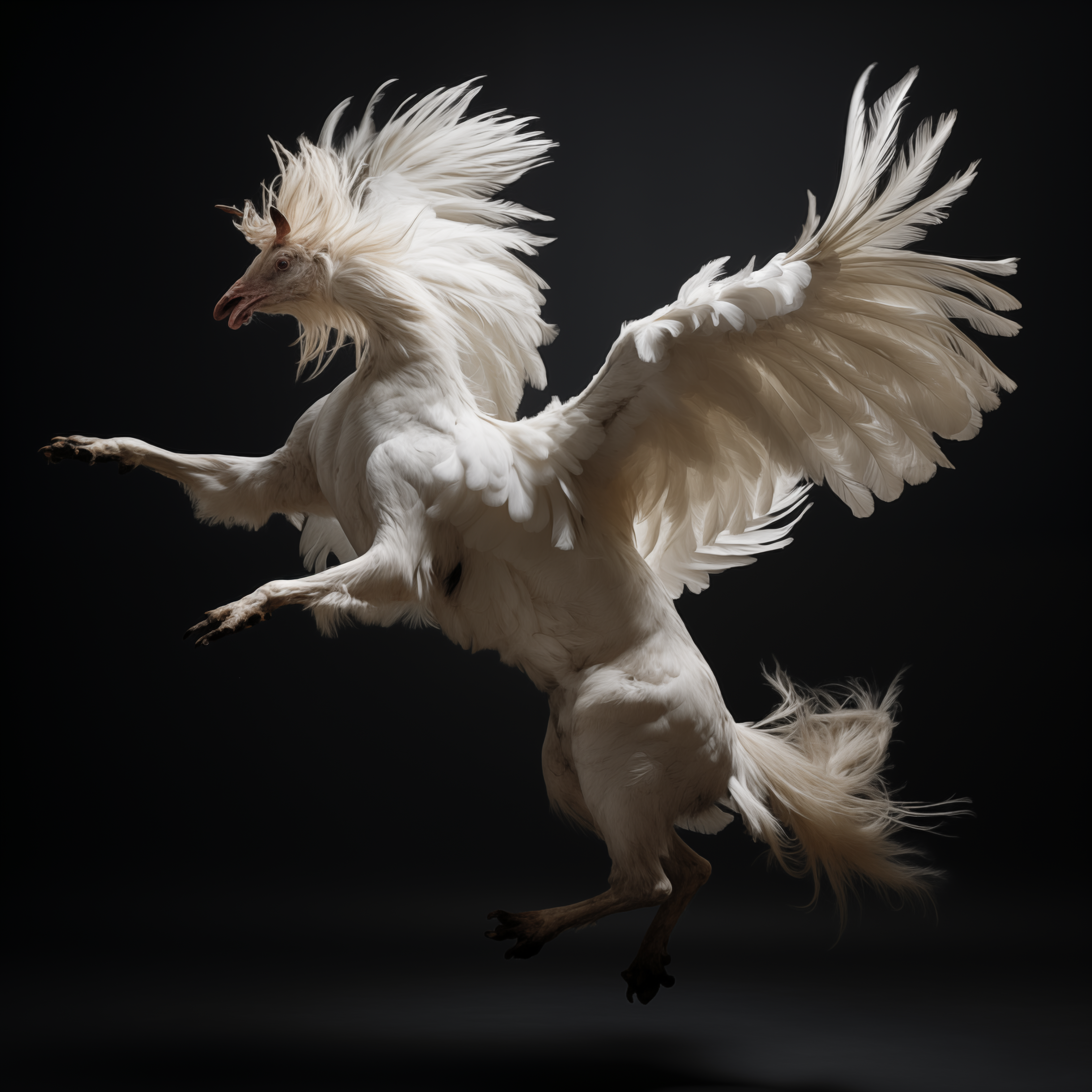
A solo exhibition, "Looks Maxxing" at Al Filo Del Agua gallery in La Cruz de Huanacaxtle, Mexico, August-October 2025
This exhibition, “Looks Maxxing”, by Micol Hebron consists of three large wall pieces– each one comprised of hundreds of digital images. The individual works, titled 'Screen/shot', 'Curriculum', and 'Whose body, whose choice?' offer a partial self portrait of an artist living in the digital Anthropocene. A central theme that recurs in
The last piece, Whose body, whose choice, is a selection of images created using generative artificial intelligence, and very simple prompts. The images are not intended to as substitutes for photography, painting, or graphic design. Rather they are an exploration of the very medium of generative AI – how language and concepts are processed and interpreted by the AI algorithms. The resulting images reveal deficits and bias in the AI programming as they explore and expose what information is missing or skewed from the datasets that are used to create the images. The prompts are inspired by various things – news headlines, memes, stereotypes, advertising, gender expression, and various other socio-cultural tropes.
Sometimes the resulting images seem to reveal uncomfortable truths about the ‘collective consciousness’ that is constructed by the internet: the simple prompt ‘Feminist’ resulted in a black and white image of a white woman with a noose around her neck. The prompt “Women’s body-building competition’ revealed two
people in a studio, literally building a female body
various ways throughout the show is the presentation and treatment of female bodies in the digital age – the maternal body, the sexy body, the aging body, the body used as an advertising tool, the sick body, the tortured body, the artificial body.
“Looks Maxxing” refers to an online phenomenon in which people take steps – from small to extreme – to improve their appearance. This encompasses make-up tutorials, diet culture, fitness routines, life-coaching, cosmetic surgery, and the strategic use of poses or digital filters to maximize one’s looks.
“Screen/shot” is a selection of screenshots from the artist’s archive of thousands of screenshots taken since 2016. These images reveal the content of the artist’s social media feeds, tracking the ads, suggestions, ‘for you’ pages, and viral memes that the algorithm presents. The patterns that are revealed throughout this wall are indicative of the artist’s interests – and usually pertain to beautiful, odd, fascinating,
or horrible things that involve the body, as well as things that call ‘reality’ into question.
Curriculum is a large wall piece that features a grid of QR codes overlaid atop 2 images (“Jennifer in Paradise”, the first image ever photoshopped; and “Bliss”, the Microsoft background, and the most viewed image in the world). Each QR code takes the viewer to a different link – a video, article, image, news story, Wikipedia page- which offers information about the images and themes in the other two pieces in the show. The series of links can also be thought of as a curriculum that reveals the artist’s own algorithm.
“Looks Maxxing” refers to an online phenomenon in which people take steps – from small to extreme – to improve their appearance. This encompasses make-up tutorials, diet culture, fitness routines, life-coaching, cosmetic surgery, and the strategic use of poses or digital filters to maximize one’s looks.
“Screen/shot” is a selection of screenshots from the artist’s archive of thousands of screenshots taken since 2016. These images reveal the content of the artist’s social media feeds, tracking the ads, suggestions, ‘for you’ pages, and viral memes that the algorithm presents. The patterns that are revealed throughout this wall are indicative of the artist’s interests – and usually pertain to beautiful, odd, fascinating,
or horrible things that involve the body, as well as things that call ‘reality’ into question.
Curriculum is a large wall piece that features a grid of QR codes overlaid atop 2 images (“Jennifer in Paradise”, the first image ever photoshopped; and “Bliss”, the Microsoft background, and the most viewed image in the world). Each QR code takes the viewer to a different link – a video, article, image, news story, Wikipedia page- which offers information about the images and themes in the other two pieces in the show. The series of links can also be thought of as a curriculum that reveals the artist’s own algorithm.
The last piece, Whose body, whose choice, is a selection of images created using generative artificial intelligence, and very simple prompts. The images are not intended to as substitutes for photography, painting, or graphic design. Rather they are an exploration of the very medium of generative AI – how language and concepts are processed and interpreted by the AI algorithms. The resulting images reveal deficits and bias in the AI programming as they explore and expose what information is missing or skewed from the datasets that are used to create the images. The prompts are inspired by various things – news headlines, memes, stereotypes, advertising, gender expression, and various other socio-cultural tropes.
Sometimes the resulting images seem to reveal uncomfortable truths about the ‘collective consciousness’ that is constructed by the internet: the simple prompt ‘Feminist’ resulted in a black and white image of a white woman with a noose around her neck. The prompt “Women’s body-building competition’ revealed two
people in a studio, literally building a female body
